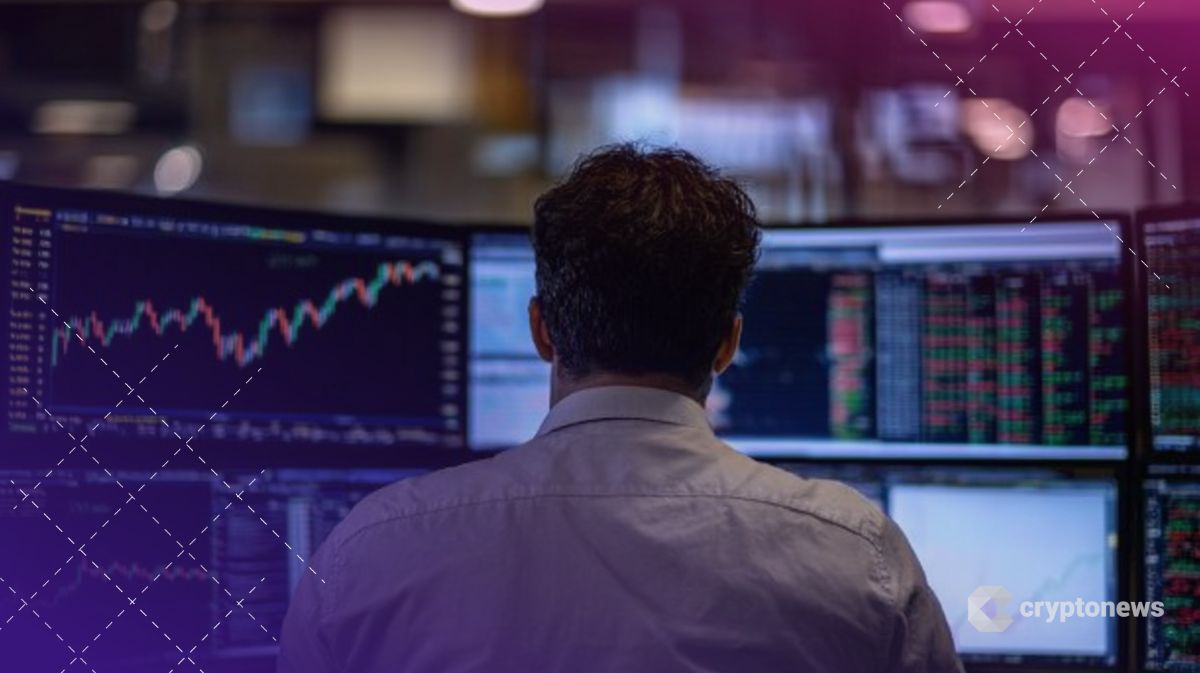Bitcoin Price Forecast: What Google Searches Reveal – and Why There’s No Hype Despite Record Highs

The Bitcoin price is now just 5% below its all-time high, currently around $104,000. However, despite the massive rally in recent days and weeks, investors remain relatively calm.
Why is this the case? And how closely are price action and search behavior actually linked? The answer is shown in a new infographic from Cryptonews.com.
In May 2021, Google search volume for the term “Bitcoin” reached its peak, with the Google Trend Score, which measures relative search interest, standing at 100 (the maximum value).
At that time, Bitcoin was priced at around $40,000. About a year later, the price had temporarily fallen to around $20,000, yet search interest remained relatively high, with a Trend Score of 69.
Average closing price in USD, week-over-week comparison. Analyzed were periods with particularly high search interest (excluding May 2025). Data source: Germany, 5-year period, each week with high search volume. Source: Google, CoinMarketCap. As the infographic shows, Bitcoin, the cryptocurrency with the highest market capitalization, is currently trading at around $103,500.But the broader public appears largely unimpressed: the current Google Trend Score is just 36. Apparently, Bitcoin’s price alone is not a reliable indicator of public interest on Google.
Cryptonews’ analysis shows that volatility was especially high in the week with the strongest Google interest. Specifically, price swings within a few days reached 58%. However, the infographic also reveals that high volatility alone doesn’t guarantee search interest.
In May 2025, for example, volatility reached around 30%, higher than in January or November of the same year – yet search volume was significantly lower during May.
The graphic shows the weekly percentage volatility of the Bitcoin price during selected weeks with high Google Trend Scores from 2021 to 2025. Volatility is calculated as the difference between the weekly high and low relative to the low. In 2021, there were extreme spikes of up to 58%. In 2024 and 2025, the price trend has been generally more stable – with one exception: in the current week (May 2025), volatility is higher than in January and November 2024, even though public interest – measured by search volume – is notably lower. Source: CoinMarketCap; Yahoo Finance.While a direct causal relationship remains unproven, the interplay of Google searches, price trends, and volatility remains relevant, especially when looking for potential price predictors.
Scientific studies suggest that increased search interest on Google can precede Bitcoin price moves. Analyses show that spikes in Trend Scores often occurred just before major price swings.
Notably, when comparing different volatility forecasting models, the one based on Google Trends performed best, even outperforming traditional market-based approaches. The graphic illustrates how clearly the trend-based model offered the strongest explanatory power.
Even if certain weeks (like May 2025) show a disconnect between high price levels and low search interest, long-term analysis tells a different story.
Bitcoin Price and Google Searches Strongly Linked Over 9 Years, Data Shows
The correlation between Google search volume and the Bitcoin market is statistically significant over a nine-year span, as shown in the graphic: price, trading volume, and market capitalization generally rise with increasing search interest.
So the apparent contradiction resolves itself as short-term exceptions are possible, but over the long term, the market often follows attention.
Looking at global Google search volume for the term “Bitcoin,” El Salvador ranks highest with a Trend Score of 100, followed by Nigeria and Switzerland. Germany ranks seventh.
Beyond public interest and short-term search trends, institutional investors are playing an increasingly central role in shaping Bitcoin’s price. Especially since the approval of the first spot Bitcoin ETFs in the U.S., capital inflows from large asset managers have grown significantly.
The development shows: it’s not just retail investors, but also pension funds, family offices, and hedge funds that are moving the market. The ETF inflow graphic underscores this trend and highlights how strongly institutional capital now contributes to price formation.
BTC Holds Strong but AI Tokens Seen as Next Big Growth Driver
While Bitcoin continues to dominate the crypto market in terms of capitalization, attention is increasingly shifting. Many market participants expect AI tokens to lead the next wave of growth in the crypto sector.
The survey shows a clear trend: the focus is moving away from the classic store-of-value use case toward innovative applications involving artificial intelligence — with potential implications for capital flows and investment behavior, particularly among retail investors.
The analysis shows that in the long run, Bitcoin’s price tends to follow public interest, even if short-term deviations occur. Currently, the Google Trend Score remains low despite high prices, a sign of a quiet market phase, in which widespread attention has yet to return.
This may well be an ideal time to accumulate Bitcoin. Historically, such quiet periods have often preceded larger moves. Based on past patterns, this calm typically ends when new all-time highs are reached or volatility spikes, and Google searches rise again.
The post Bitcoin Price Forecast: What Google Searches Reveal – and Why There’s No Hype Despite Record Highs appeared first on Cryptonews.



